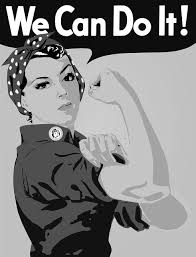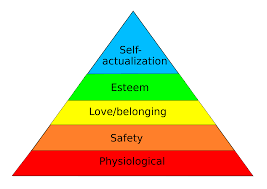Eve Gentry asked the question “Do you teach concepts, or do you teach exercises? Are you a teacher, or are you a conveyor belt?” She went on to say “If you’re a conveyor belt then, sooner or later the mechanism will get stuck.”
You are probably familiar with the expression “Give a man a fish and you feed him for a day; show him how to catch a fish and you feed him for a lifetime.”
Eve Gentry was saying essentially the same thing, and this reflects how we want to teach people at our studio – the exercises are expressions of concepts, or principles. Our goal for our clients, our ‘offering’ if you like, is ‘whole body health’, in keeping with Joseph’s intentions. We are not interested in making people better at Pilates, but rather in improving all aspects of their health that movement can influence (and being ‘better’ at the exercises will be one manifestation of this). We will help people to move better (and, by extension do the exercises better) if we have explained the principles behind the exercise, and how to apply them.
If we fall into the trap of teaching people choreography – something which stands alone – then we teach them to be better at that specific movement. We miss the opportunity to make connection between exercises that reinforce movement principles, and therefore the carry-over into other activities.
For example, Clams might be considered an exercise done side-lying with your hips at 45 degrees, and your knees at 90 degrees, in which you target your gluteus medius by reaching your knee toward the ceiling. Or we could consider it as a movement of contrasting stability and mobility, similar to the way we lift our legs for the Hundred, in which the stability of your trunk enhances the mobility of your hip. Instead of being The Clam, part of the side-lying repertoire, it is another movement (one of many in Pilates) of stabilising your trunk against the load of your limb/s.
You may be lucky, and find that something that you say is a lightbulb moment for someone that you’re teaching for the first time. On the whole, if we are to be successful, we have to build relationships with the people that we teach, so that we can understand each other better. Naturally, we have to maintain clear boundaries, and you must set those according to what feels right for you. At the same time, to learn more about the people we teach we have to give something of ourselves how can you learn what their interests are? What makes them tick, what do they care about? Small snippets of information may provide valuable clues as to how best to communicate a specific idea to them.
Part of maintaining healthy functioning relationships is the ability to let go of your plan, to be able to react to the other person/people in the relationship. I’m sure that you know this from your own life, and it’s true for teaching, too.
To approach your class with a plan is useful, but if your plan is a sequence of exercises, with specific repetitions, and customary verbal cues, do you leave yourself the space to respond to your students? Does teaching your class according to your plan actually get in the way of you being present, and seeing what is happening? Can you let go of the plan if it’s the thing which determines the structure and flow of your class?
If you are teaching principles, or concepts, then letting go of the plan becomes relatively easy. Instead of a set sequence of exercises we can teach to a theme; or have a single exercise as a goal – ‘I’m going to teach the Push Up today, so I’m going to build up to it with all the different components that I think are crucial to the movement, informed by how everyone is moving today.’
If we recognise exercises for the concepts that they teach, then choosing them ‘on the fly’ becomes easy. If the group needs reminding of efficient weight-bearing through their hands then we can do something specific to that, if shoulder stability needs addressing there are plenty of tools for that, if it’s midline stability that needs the focus…well, Pilates has lots for that. All of these will be great preparations for the Push Up, but they’re tools in the box, instead of being a plan I’ve committed to. Then, we can teach people what they need, instead of what we decided the day before that we wanted to teach.
Eisen and Friedman, in their book published in 1984, gave us the 6 principles that most will recognise as the principles of Pilates. However, the concepts that we are talking about teaching are the ‘how’ of position and movement that will help to achieve some of those 6 principles.
For instance, how does someone achieve ‘Control’ in their movement? Controlled movement is a product of joints fitting together well, and efficient transfer of weight/load through our structure. This is what we need to teach: how to achieve joint congruency and efficient transfer of load – this is the ’how’ of moving well, and therefore the how of executing Pilates exercises efficiently.
If we talk about ‘centre’, ‘cylinder’ or ‘core’, what do we mean? We may have a very clear physical sensation that fits with one, or all, of these abstract terms, which might be a product of lots of practice, anatomical understanding and kinaesthetic awareness. If our clients lack these, how can we explain it to them? And how can we explain it to them in a way that becomes repeatable for them, and useful in their everyday activities? Will it be sufficient to tell them to ‘engage’ something or other? How will they know, and you know, if they are really doing the right thing? What measure do they have for ‘am I using my centre or not’?
We want to teach people in a way that gives them skills they can reproduce outside the class, and to encourage their reflexive responses – so they don’t need to be told to ‘switch on’ or ‘engage’, their actions and environment trigger the appropriate support automatically.
So what are the principles that we should be teaching?
Grounding
Unless we are relaxing, to create stability we need to have a firm base of support. If we’re standing, the action of pressing our feet into the floor will help to organise our joints in a stable position. The same when sitting. If I’m lying down, doing a Pelvic Lift/Bridge perhaps, my shoulder girdle and my feet need to press firmly into the floor to create stability; if we’re doing the Hundred, our mid-backs need to anchor to the floor, as well as the back of our pelvis, to create stability. We can teach these positions relatively easily, without having to resort either to naming muscles, or to abstract concepts (core, centre etc).
Centration
For efficient transfer of load through our bodies, and for the longevity of our joints, we need to maintain congruency, or centration of our joints while we move. Meaning that the articular surfaces of the joints maintain as much contact as possible as we move – they fit together well. The action of grounding may well stimulate centration, along with Kelly Starrett’s concept of torque farming, particularly in relation to the ball and socket joints. Keep in mind that the external rotation of ‘torque farming’ has to occur at the ball and socket joint. The distal part of the limb (forearm/shin) needs to be counter-spiralling in internal rotation to facilitate congruency of all the relevant joints.
A joint that is not congruent might still be stable, but not in a way that involves all the soft tissues around the joint working together. You can test this on all fours, feeling for yourself the difference between relaxing and pushing your hands and shins into the ground – notice how the rest of your body responds, not just your hands and shins.
Elongation
Of course, we always want to encourage length in every exercise that we teach – it’s almost synonymous with Pilates. Benjamin Degenhardt likes to ask this question, in every exercise: “Do you have space for your joints and organs?” If we answer “No”, then we’re not in a good position. Once again, the action of grounding may well assist in giving us more space (and putting our joints into better positions).
Compression/Decompression
We need compression (not to be confused with shortening, or crunching) of our joints, to lubricate and stimulate them, but this should be coupled with decompression, so that there is a pump-like action working on the joint. We need one to achieve the other, the same way that we need to go further into extension to facilitate flexion, and vice versa. So, for example, if someone is habitually anteriorly tilting their pelvis, rather than trying to stretch them in hip extension, they need to be taken further into hip flexion in order to be able to then go into more extension/posterior tilt.
To help reinforce the teaching of these principles, the following ideas might be helpful: The developmental pathway of human babies includes these actions:
Push; Pull; Reach; Yield; Grasp; Release
These could form the basis of all movement teaching, since they are innate to our development – we are ‘wired’ to do these. Using these words when you teach may well take care of a lot of the reflexive responses that we want to encourage, without the need for ambiguous or opaque verbal cues. Students can use their environment (whether it’s the mat or the apparatus) to learn better movement patterns.
In athletic development the fundamental movements are considered to be:
Push; Pull; Rotate; Raise/lower centre of mass; Locomote
This is to say, for decades these movements have been recognised to be fundamental to human athletic endeavours and, particularly since they are not activity specific, we can assume that they will serve our students/clients well in their day to day activities.



 The longer I teach, the more interested I become in the use of, and the meaning or implication of specific words or phrases (I was called out, quite rightly, last week for saying, in response to my client’s effort to achieve the position I was asking for “We’ll settle for that” which, of course, sounds a lot like “that’s shit but probably the best we can hope for just now”. Yes, I was ashamed).
The longer I teach, the more interested I become in the use of, and the meaning or implication of specific words or phrases (I was called out, quite rightly, last week for saying, in response to my client’s effort to achieve the position I was asking for “We’ll settle for that” which, of course, sounds a lot like “that’s shit but probably the best we can hope for just now”. Yes, I was ashamed). I’ve made
I’ve made  The longer I teach, the more bizarre the exhortation “listen to your body” seems to be, to me. Of course, I understand why teachers of movement might say this, or rather, (I think) I understand what they would like to convey. Autonomy and personal responsibility are terrific ideas to be reinforcing when teaching but there seem to be two significant problems with “listen to your body”.
The longer I teach, the more bizarre the exhortation “listen to your body” seems to be, to me. Of course, I understand why teachers of movement might say this, or rather, (I think) I understand what they would like to convey. Autonomy and personal responsibility are terrific ideas to be reinforcing when teaching but there seem to be two significant problems with “listen to your body”.
